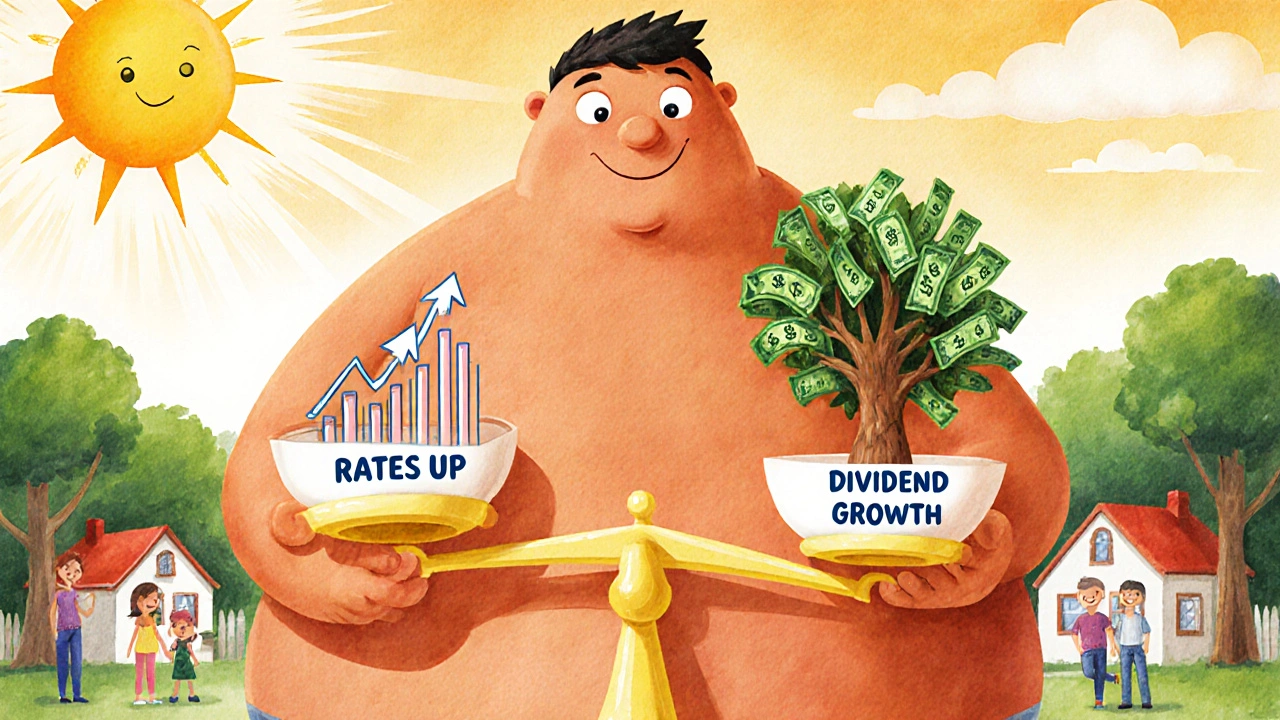Dividend Growth: How Consistent Payouts Build Long-Term Wealth
When you invest in a company that increases its dividend growth, the consistent rise in quarterly payouts to shareholders over time, you're not just collecting cash—you're backing a business that's growing its profits and rewarding loyal owners. Unlike stocks that pay a flat dividend, dividend growth stocks are chosen because they have a track record of raising payments annually, often for decades. This isn't magic—it's a signal. Companies that can keep raising dividends through economic cycles usually have strong cash flow, competitive advantages, and disciplined management. These are the kinds of businesses that survive recessions, outlast fads, and turn small investments into reliable income streams.
Dividend growth relates directly to dividend investing, a strategy focused on owning stocks that pay regular, increasing dividends, and it’s one of the few approaches that lets you earn money while you sleep. The real power comes from dividend reinvestment, the practice of using cash payouts to buy more shares, compounding your ownership over time. For example, if you reinvest dividends from a stock that raises its payout by 7% a year, your income doesn’t just grow—it accelerates. Over 15–20 years, that can turn a $10,000 position into a $50,000+ income stream, even if the stock price barely moves. You don’t need to time the market. You just need to pick companies that keep getting better at paying you.
Not all high-yield stocks are dividend growth stocks. Some pay big dividends because they’re struggling—cutting costs to keep payouts alive. True dividend growth companies are the opposite: they’re profitable, expanding, and confident enough to give more back to shareholders every year. Think of them like a salary that gets a raise annually, not a one-time bonus. The best ones are often in industries like consumer staples, healthcare, and utilities—businesses with steady demand, pricing power, and long customer relationships. You’ll find them in the dividend aristocrats, a group of S&P 500 companies that have raised dividends for at least 25 consecutive years. They’re not flashy, but they’re built to last.
Dividend yield matters, but it’s not the whole story. A 4% yield today might look great, but if the company freezes payouts for five years, you’re stuck. What you really want is a 2% yield that climbs to 5%, then 7%, over a decade. That’s the difference between passive income and growing income. The posts below show you how to spot these companies, avoid traps, compare fees on dividend-focused platforms, and even use dividend reinvestment to reduce your tax burden over time. You’ll see real examples of how people turned small, regular payouts into major financial security—not by chasing hot stocks, but by sticking with the ones that keep paying more.



